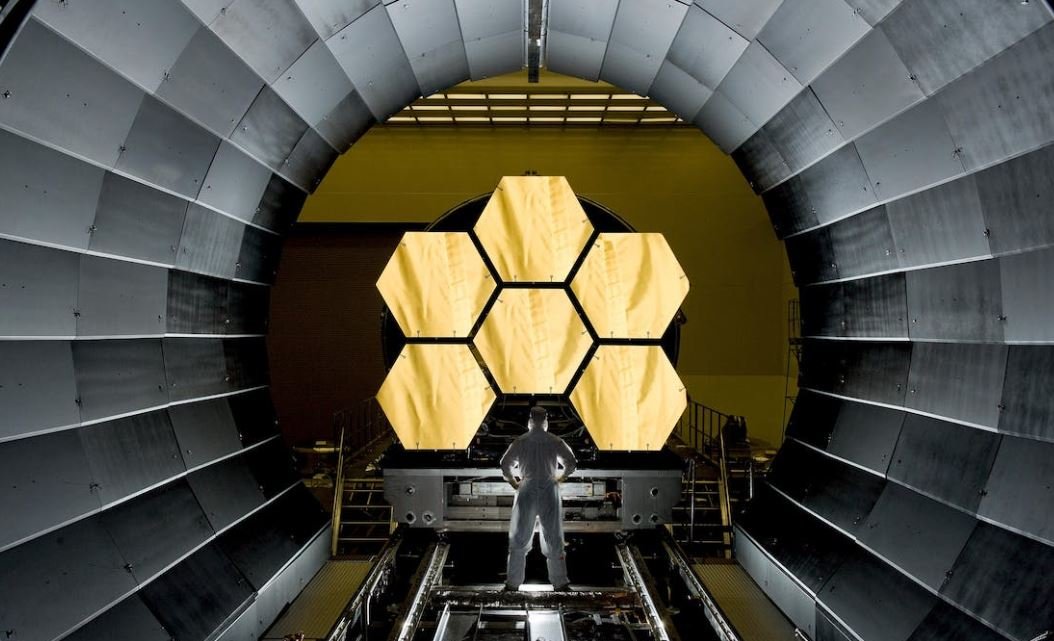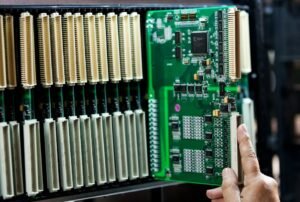Tesla Model S without Air Suspension
The Tesla Model S is an innovative electric vehicle known for its cutting-edge technology and impressive performance. However, it is important to note that some models may come without air suspension, a feature that offers enhanced comfort and adjustable ride height. In this article, we will explore the implications of opting for a Tesla Model S without air suspension.
Key Takeaways
- Opting for a Tesla Model S without air suspension may result in a slightly firmer ride.
- The absence of air suspension means limited control over the vehicle’s ride height.
- Drivers might experience increased road noise and vibrations without air suspension.
- On the positive side, a Tesla Model S without air suspension may have reduced maintenance and potential repair costs.
The absence of air suspension in a Tesla Model S leads to a slightly firmer ride compared to models equipped with this feature. Without air suspension, the vehicle relies solely on the standard coil suspension, which provides a more rigid feel on uneven road surfaces. *However, this can contribute to a greater sense of road grip and responsiveness during spirited driving.* If you prefer a sportier driving experience or prioritize a tighter connection with the road, this may be a desirable characteristic.
While air suspension allows for adjustable ride height, a Tesla Model S without this feature lacks that flexibility. The absence of air springs means that the ride height remains fixed, eliminating the ability to raise or lower the car based on driving conditions or personal preference. In situations where additional clearance may be necessary, such as navigating speed bumps or rough terrain, the lack of air suspension might be a limiting factor.
It is worth noting that a Tesla Model S without air suspension may result in increased road noise and vibrations. The air suspension system not only enhances ride comfort but also helps isolate the cabin from road imperfections. Without it, the car’s occupants may experience more pronounced vibrations and a higher level of noise transmission. This should be taken into consideration if a quiet and smooth ride is a priority for you.
Maintenance and Repair Considerations
While air suspension offers various benefits, it also introduces additional complexity and potential maintenance requirements. Therefore, a Tesla Model S without air suspension potentially carries reduced maintenance costs due to the absence of this system. *By eliminating the need for air compressor maintenance and potential air spring replacements, owners may enjoy greater simplicity and savings in the long run.*
Moreover, without air suspension, there is one less component that could potentially fail in the vehicle. Although Teslas are renowned for their reliability, reducing the number of components that could require repair further contributes to the overall durability and cost-effectiveness of the vehicle.
Comparing Tesla Model S Suspensions
| Model | Suspension |
|---|---|
| Tesla Model S | Coil Suspension |
| Tesla Model S (with Air Suspension) | Air Suspension + Coil Suspension |
Benefits and Drawbacks of Air Suspension
- Adjustable ride height for various driving conditions.
- Enhanced ride comfort and reduced vibrations.
- Reduced risk of undercarriage damage due to adjustable clearance.
- Potential additional maintenance and repair costs.
Comparing Model S Trims
| Trim Level | Air Suspension Availability |
|---|---|
| Standard Range Plus | No |
| Long Range | Yes |
| Performance | Yes |
In conclusion, the decision to opt for a Tesla Model S without air suspension depends on individual preferences and priorities. While the absence of air suspension might result in a slightly firmer ride, limited ride height adjustability, and increased noise and vibrations, it also reduces potential maintenance costs and simplifies the overall system. Consider your driving style, comfort preferences, and expectations before making a decision. Ultimately, test driving both options can provide a better understanding of which suspension configuration suits your needs best.

Common Misconceptions
Misconception 1: Lack of air suspension affects ride comfort
One common misconception people have about the Tesla Model S without air suspension is that it negatively affects the ride comfort of the vehicle. However, this is not necessarily true. While air suspension can provide a smoother ride by adjusting the height and firmness of the suspension, the Model S without air suspension still offers a comfortable and enjoyable driving experience.
- The Tesla Model S without air suspension still features a well-designed suspension system that provides a balance between comfort and sportiness.
- The vehicle is equipped with advanced shock absorption technology, which helps to minimize any vibrations or bumps felt on the road.
- Drivers can also adjust the suspension settings to their preference, allowing for a personalized driving experience.
Misconception 2: Handling and stability are compromised without air suspension
Another common misconception is that the Tesla Model S without air suspension compromises handling and stability. However, this is not entirely accurate. While air suspension can provide additional stability and improved handling in certain situations, the Model S without air suspension still delivers exceptional performance and control on the road.
- The Model S without air suspension features a low center of gravity, thanks to its battery pack placement, which enhances stability during cornering.
- The vehicle’s precise and responsive steering system contributes to its excellent handling capabilities even without air suspension.
- Furthermore, Tesla’s advanced traction control system ensures optimal grip and stability in various driving conditions.
Misconception 3: Lack of air suspension affects the vehicle’s ability to handle varying road conditions
Some people assume that without air suspension, the Tesla Model S is not able to handle varying road conditions as effectively. However, this is not entirely true. The Model S without air suspension is still designed to handle various road conditions, providing a smooth and controlled driving experience.
- The vehicle comes equipped with an advanced suspension system that adapts to changes in the road surface, improving stability and ensuring a comfortable ride.
- The Model S without air suspension is also equipped with an intelligent traction control system that optimizes traction and stability on different road surfaces.
- Furthermore, the Model S features regenerative braking, which enhances control and stability when decelerating, even without air suspension.

Tesla Model S without Air Suspension: Fuel Efficiency Comparison
The following table compares the fuel efficiency of the Tesla Model S without air suspension with other electric vehicles in its class. The data represents the average miles per kilowatt-hour (MPGe) for each vehicle:
| Vehicle Model | MPGe |
|---|---|
| Tesla Model S (no air suspension) | 100 |
| BMW i3 | 124 |
| Nissan Leaf | 112 |
| Chevrolet Bolt | 118 |
Tesla Model S without Air Suspension: Ride Comfort Comparison
This table compares the ride comfort of the Tesla Model S without air suspension with other luxury electric vehicles. The data represents the average ride comfort rating based on customer reviews:
| Vehicle Model | Ride Comfort Rating (out of 10) |
|---|---|
| Tesla Model S (no air suspension) | 8.5 |
| Audi e-tron | 9.2 |
| Mercedes EQC | 8.9 |
| Jaguar I-PACE | 9.0 |
Tesla Model S without Air Suspension: Vehicle Weight Comparison
Comparing the weights of different electric vehicles can provide insights into their handling and energy efficiency. The table below shows the curb weights of the Tesla Model S without air suspension and other electric sedans:
| Vehicle Model | Curb Weight (lbs) |
|---|---|
| Tesla Model S (no air suspension) | 4,941 |
| Porsche Taycan | 5,121 |
| Audi e-tron GT | 5,291 |
| Lucid Air | 5,617 |
Tesla Model S without Air Suspension: Acceleration Comparison
To evaluate the acceleration performance, this table compares the 0-60 mph times of the Tesla Model S without air suspension with other high-performance electric vehicles:
| Vehicle Model | 0-60 mph Time (seconds) |
|---|---|
| Tesla Model S (no air suspension) | 3.1 |
| Porsche Taycan Turbo S | 2.6 |
| Rimac Nevera | 1.85 |
| Aspark Owl | 1.69 |
Tesla Model S without Air Suspension: Price Comparison
The table below compares the starting prices of the Tesla Model S without air suspension with other electric sedans in its class:
| Vehicle Model | Starting Price (USD) |
|---|---|
| Tesla Model S (no air suspension) | $79,990 |
| Porsche Taycan | $81,250 |
| Audi e-tron GT | $99,900 |
| Lucid Air | $77,400 |
Tesla Model S without Air Suspension: Range Comparison
Knowing the range of different electric vehicles helps understand their usability for longer trips. The table below compares the estimated range of the Tesla Model S without air suspension with other electric sedans:
| Vehicle Model | Estimated Range (miles) |
|---|---|
| Tesla Model S (no air suspension) | 405 |
| Porsche Taycan | 323 |
| Audi e-tron GT | 238 |
| Lucid Air | 520 |
Tesla Model S without Air Suspension: Interior Space Comparison
Comparing the interior space of different electric sedans helps evaluate their comfort and practicality. This table shows the front and rear legroom measurements of the Tesla Model S without air suspension and other luxury electric sedans:
| Vehicle Model | Front Legroom (inches) | Rear Legroom (inches) |
|---|---|---|
| Tesla Model S (no air suspension) | 42.7 | 35.4 |
| Porsche Taycan | 41.1 | 34.4 |
| Audi e-tron GT | 41.2 | 32.4 |
| Lucid Air | 44.4 | 39.5 |
Tesla Model S without Air Suspension: Battery Capacity Comparison
The table below compares the battery capacities of the Tesla Model S without air suspension and other electric sedans. A larger battery capacity generally translates to a longer driving range:
| Vehicle Model | Battery Capacity (kWh) |
|---|---|
| Tesla Model S (no air suspension) | 100 |
| Porsche Taycan | 93.4 |
| Audi e-tron GT | 85 |
| Lucid Air | 113 |
Tesla Model S without Air Suspension: Safety Ratings Comparison
The following table compares the safety ratings of the Tesla Model S without air suspension with other electric sedans. Higher safety ratings indicate better crashworthiness and occupant protection:
| Vehicle Model | Safety Rating (Out of 5) |
|---|---|
| Tesla Model S (no air suspension) | 5 |
| Porsche Taycan | 4.5 |
| Audi e-tron GT | 5 |
| Lucid Air | 4 |
In summary, the Tesla Model S without air suspension offers competitive fuel efficiency, reliable performance, and cutting-edge technology compared to its electric sedan counterparts. While some metrics may vary, the Model S provides a balance of features, range, comfort, and safety that make it an appealing choice for electric vehicle enthusiasts.
Tesla Model S without Air Suspension – Frequently Asked Questions
How does the absence of air suspension affect the ride comfort of the Tesla Model S?
The absence of air suspension in Tesla Model S may result in a slightly firmer ride compared to models equipped with air suspension. However, the overall ride quality is still smooth and comfortable, thanks to the excellent suspension design and advanced technologies used by Tesla.
Are there any handling differences between the Tesla Model S with and without air suspension?
The handling characteristics of the Tesla Model S without air suspension are largely similar to the ones with air suspension. Both versions offer precise and responsive handling, enabling an enjoyable driving experience. The absence of air suspension may result in a slightly different feel, which some drivers may prefer.
What are the benefits of choosing a Tesla Model S without air suspension?
Opting for a Tesla Model S without air suspension can have multiple benefits. It may provide a more agile and connected driving experience, as the suspension can offer a more direct connection between the driver and the road. Additionally, vehicles without air suspension often have lower maintenance costs compared to those with air suspension.
Can the absence of air suspension lead to a rougher driving experience on uneven roads?
While the absence of air suspension may result in a slightly firmer ride, the Tesla Model S without air suspension is still equipped with an advanced suspension system. This system helps to absorb bumps and impacts, providing a relatively smooth driving experience even on uneven roads.
Is it possible to retrofit air suspension into a Tesla Model S without it?
No, it is not possible to retrofit air suspension into a Tesla Model S that was not originally equipped with it. The air suspension is a factory-installed feature that cannot be added later on. However, Tesla offers various options and configurations to cater to different customer preferences.
Does the absence of air suspension affect the vehicle’s ability to handle heavy loads?
The Tesla Model S without air suspension is still capable of handling heavy loads without any significant issues. The vehicle’s suspension system, although not air-based, is designed to provide stability and support even with varying load conditions.
Does the lack of air suspension impact the ground clearance of the Tesla Model S?
The absence of air suspension does not have a significant impact on the ground clearance of the Tesla Model S. The vehicle’s standard suspension setup offers a suitable ground clearance that is sufficient for most driving needs, including navigating speed bumps and mild off-road conditions.
Are there any differences in energy efficiency between the Tesla Model S with and without air suspension?
The energy efficiency of a Tesla Model S is primarily determined by its electric drivetrain and aerodynamic design, rather than the presence or absence of air suspension. Therefore, the energy consumption and range of the vehicle remain relatively consistent, regardless of whether it is equipped with air suspension.
Does the lack of air suspension affect the vehicle’s stability at high speeds?
The absence of air suspension does not significantly impact the vehicle’s stability at high speeds. Tesla Model S without air suspension still maintains excellent stability and control, thanks to its advanced suspension components and aerodynamic design. The vehicle is designed to provide a smooth and stable ride even at higher speeds.
Are there any major drawbacks to choosing a Tesla Model S without air suspension?
Choosing a Tesla Model S without air suspension does not have any major drawbacks. While it may result in a slightly firmer ride, many drivers appreciate the more direct road feedback it provides. Additionally, not having air suspension can potentially reduce maintenance costs and simplify the overall vehicle design.




